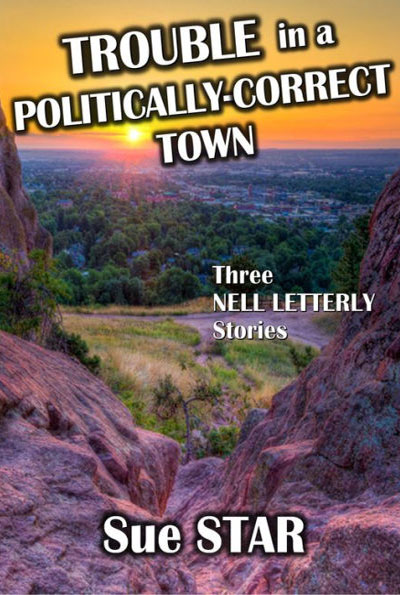Read the first part of Death of a Prairie Dog (a selection from Trouble in a Politically-Correct Town)
Death of a Prairie Dog

Wallis Colondoski pressed her foot to the metal a little too hard on the old Suburban. She was late (as Jimmie used to tell her ad nauseum), really late to her writer’s group meeting across town.
It was blazing hot, one of those last reminders of summer before the onslaught of winter, oh say, next week, and she liked to drive with the windows cranked open, fast enough to produce a nice breeze. She didn’t care if it mussed her hair. Whom did she have to impress anymore?
She was in a hurry to ask for advice on a story of hers that was rejected, the editor claimed, for using terms that weren’t acceptable in today’s world. Should she stick to her guns and keep the story historically accurate, or should she distort the actual story in order to be politically correct?
As she was mulling this over and just beginning to make up time, the traffic light changed ahead. Naturally. City Council had designed the timing of lights this way. It was part of their larger effort to discourage the use of cars here in the so-called People’s Republic of Boulder, Colorado.
She slammed on the brakes, and the old girl screeched to a halt, only a couple of inches inside the crosswalk. Not too bad.
“Hey!” Someone shouted at her through her open window. But she hadn’t hit anything.
A small group of protesters distributed themselves on each of the four corners of the intersection. They were shouting and chanting, but not at her. They carried placards, and they waved them in the air. She could only make out a few words: “Stop!” and “No kill!” and “Save the prairie dogs!”
Just as she processed the peaceful orderliness of the protest, a shadow zipped past her passenger window, charging like a storm to beat her into the intersection.
A yelp, a screech, and a thud all slammed together into one sickening sound of a collision.
The protester nearest to her car toppled over, knocked to one side. His sign flew out of his grip, landing with a clawing scratch across the hood of the Suburban. The shadow that had hit him clattered against her fender and dropped to the ground.
“Oh no!” Wallis cried, flinging open her car door. For a moment, she forgot about the arthritis in her hip and her bum ankle, and she paid for her haste with stabs of pain when she jumped down onto the asphalt. The passenger in the passing car in the next lane gave her an annoyed glance.
“They need help!” she shouted, limping around the front of her bumper. She had to push past a cluster of pedestrians, who’d frozen in place for the first few heartbeats of the accident.
The protester sprawled across the curb, like something a snowplow had shoved to one side. The untied laces of his tattered sneakers dangled into the bike lane, and the rest of him crumpled against the base of a light pole. A man in black was bending over him as a handful of pedestrians paused along the sidewalk, watching from several feet away. Everyone else-pedestrians and traffic-kept streaming past, slowing to rubber-neck, but not stopping to help.
Too late, she realized that she’d left her cell phone in her purse sitting on the front seat of the car. Luckily, someone was already helping the protester. “Is he okay?” she asked the Good Samaritan in black.
The entire collection is available in ebook format from:
Also available for most other ereaders
